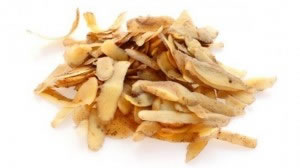Acrylamide reduction: DSM talks about the potato chip challenge
Enzymes can help snack makers significantly reduce acrylamide in baked goods and snacks, but they are not ideal for potato chips, says DSM.
DSM’s PreventASe enzyme works in baked goods, snacks and biscuits to reduce acrylamide formation by converting asparagine into another natural amino acid, aspartate – removing one of the precursors to the reaction.
However, global marketing and sales manager for the product Jeroen van Roon said the enzyme is less suitable for applications like potato chips.
“The honest picture is that in dough-based applications, where there’s time for the enzyme to react, we can achieve fantastic acrylamide reduction with no impact to the final product,” Van Roon told BakeryandSnacks.com.
Potato processing is very short and there is a very high level of asparagine in potatoes, he said, making it difficult for the enzyme to be effective.
PreventASe can enable up to 90% acrylamide reduction but for potato chips, it is nowhere near that, he added.
Working on snacks…
“Of course we are continuing to look at how to maximise use of the enzymes we have – continuing to look at all segments, including potato chips,” Van Roon said.
DSM is heavily investing in R&D for acrylamide reduction in snacks given the interest in the market, he said.
“We are working with our customers. This is not a discussion that is black and white,” he said.
‘Intrinsic advantage’
There are some advantages with use of enzymes to reduce acrylamide, Van Roon said.
“The advantage of using enzymes is that it’s specific. They are not geared towards reducing the Maillard reaction or browning process which could lead to changes in the final product,” he said.
DSM’s product is focused on converting asparagine to aspartate, and this ensures less impact on the final flavor and texture of the product, he said.
Acrylamide reduction on the agenda
“Acrylamide reduction is clearly still an issue on the agenda of industry and at government level,” Van Roon said.
“The industry is taking this very seriously – it is acting,” he added.
Van Roon observed that many manufacturers are opting for combinations – using technology, processing changes and enzymes together in the battle against acrylamide formation.
“We like to consider ourselves as part of the solution. Enzymes are a very useful contribution to the toolbox out there,” he said.


































